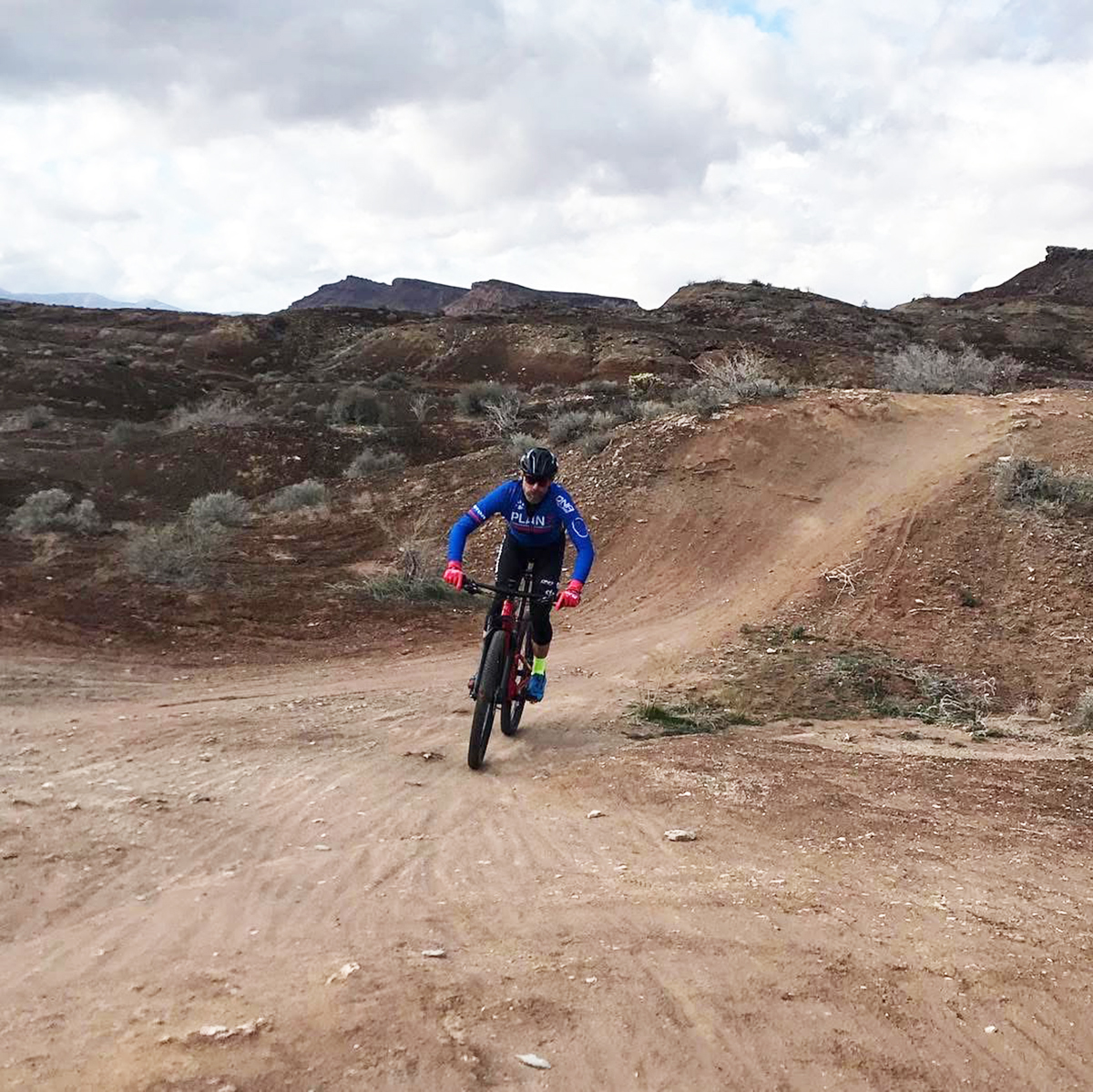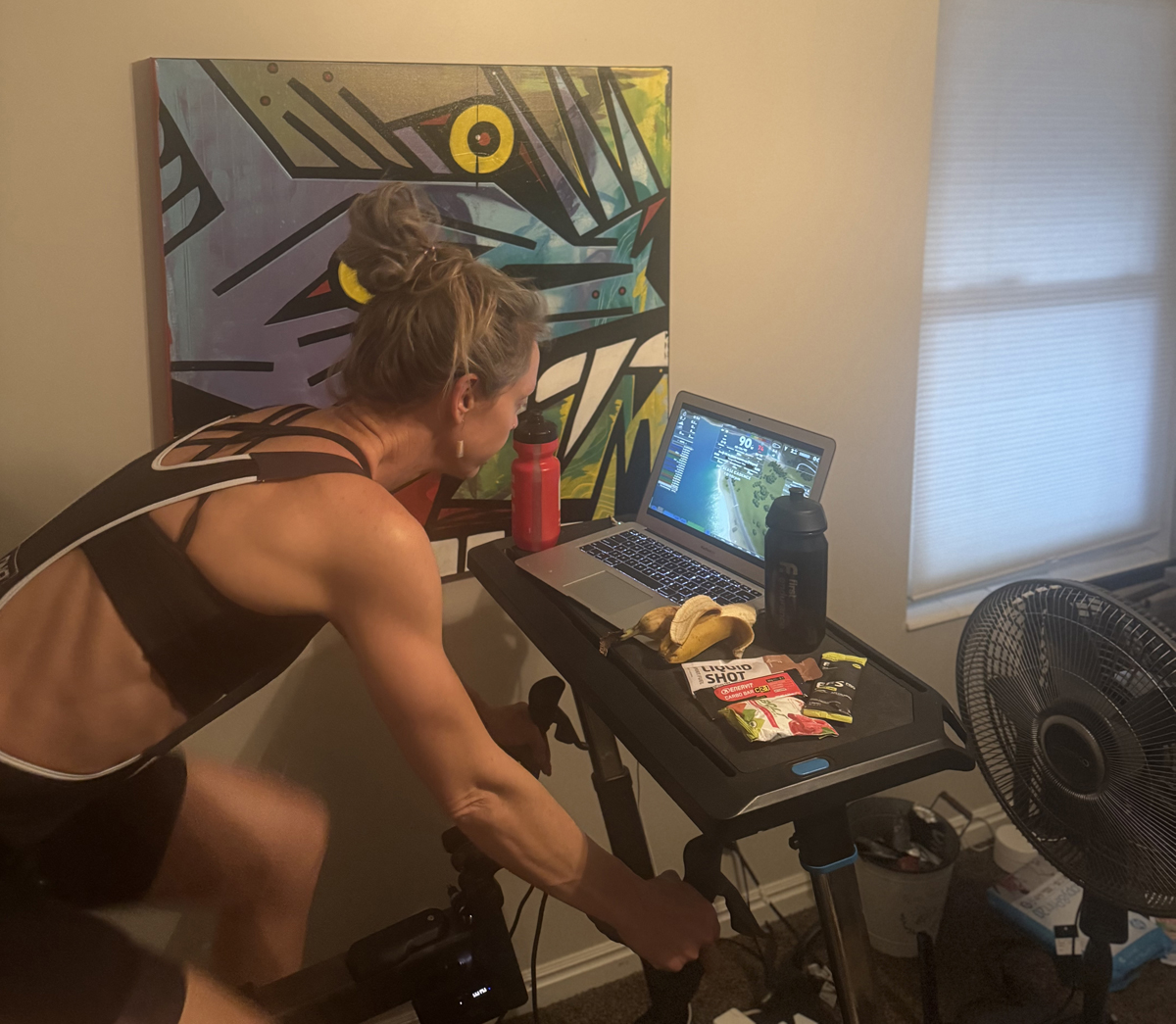By Breanne Nalder Harward, MS RDN — The cycling season is long as well as demanding of the body. We utilize a multitude of macro- and micro-nutrients to turn the pedals the thousands of revolutions per ride that the fuel we put into the tank is essential for everyday success and long-term health. It’s worth noting that taking a break, from a training perspective, is healthy and recommended. The human body needs rest as much as it needs the hours in the saddle, strength training, stretching, and of course proper nutrition. The allusion here is that taking time off at the end of the season is normal, if not necessary, but fueling the body for performance and overall health never needs an “off-season.” In fact, winter training can be an opportunity to establish eating patterns to train the body to utilize nutrients so when the time comes for next season’s events/races, those patters are lifestyle.

Fueling in Winter Conditions
Heading out into the elements of the winter months can bring many challenging conditions. Aside from cold temperatures, one can encounter anything from wet roads, muddy trails, wind, rain, snow, and don’t forget the dreaded inversion that accumulates in the periods between storms. These changes can affect our nutrition intake drastically, making eating and drinking regularly a challenge. Not only is it hard to remember to drink in the cold when our sweat cues aren’t the same, but the layers of clothing we wear or gloves on our fingers can limit access to our pockets to grab that gel or bar. Also, the body doesn’t sweat the same as it does in the heat of summer. It takes a significant amount of energy to keep the body warm as well (think of the water loss from every exhale as we see the steam from the wet heat of our breath), so our perception of effort can be skewed. Based on all these varying factors, let’s re-visit the basic fueling needs in endurance cycling.
Carbs are Life
The focus of caloric intake for endurance exercise is to base carbohydrate (CHO) consumption on the intensity and duration of the ride. Most of us know how many calories we burn during any given effort from our equipment. Whether it’s direct kJ output from a power meter, an equated number from a heart rate monitor, data from the smart trainer or online app, pay attention to what you burn on average per hour so you can estimate what your energy needs will be before you set out to ride. For example, an average burn of 800 calories per hour would need ~200g CHO/hr (note that there are 4 calories for every gram of carbohydrate). Sport nutrition research is finding more and more challenge to the “rule of thumb” intake of 30-60 g/CHO as the “high carb” drink mixes now are being made with 60-90g per serving and recommendations are getting as high as 120g CHO/hr for the highest level of professional racing. The important thing to note here is your individual burn rate and developing a strategy to consume the carbohydrates needed to fuel your individual effort in the food and liquid intake before, during and after each ride.
Fueling Indoor Workouts
For many, riding indoors is the efficient way to train during the winter months. With that comes a few things to take into consideration when it comes to fueling. First, sweat rate is usually higher as being in a stationary place without wind factor produces an overabundance of heat. Luckily, being in a controlled environment also means there is access to food, liquid and a fan throughout the workout. I recommend up to 2 bottles of drink mix per hour on indoor rides to keep up on caloric burn and all hydration lost via sweat plus any extra food needed to meet the carbohydrate needs of the workout as discussed above.

Winter training is also an opportune time to dial in fueling choices, practice intaking various foods or sport products. Training the body to efficiently utilize those carbohydrates, water, and electrolytes creates a well-oiled machine. I hear all too often that off-season training makes people think that they don’t need as much fuel or drink mix because “it’s not a race” or that they’re trying to “cut weight”. But those practices do not lend themselves to improving power, speed or performance. Rather, restricting calories/carbohydrates/electrolytes around workouts leads to ingesting them when the body isn’t trying to utilize them. We’ve all been in the situation where we didn’t eat or drink enough during a ride so end up eating an entire bag of chips later in the day because our bodies are so deprived of carbs and salt! The body would much prefer having that energy when the legs and lungs are trying to get through intervals than when sitting on the couch. Give the muscles a chance to push the watts, try different carbohydrate foods and drink mixes, and truly find what works best for your body.
Fuel for Cross Training
As many cyclists emphasize strength training in the winter months, the proper nutrition intake should be a definite consideration to accomplish the goal of increasing power output on the bike. When it comes to energy from muscles, most people immediately think of protein. Sure, muscle fibers are made from amino acids (the building blocks of proteins) but they actually utilize carbohydrates to fire. That’s right, carbs again! So, whether cross training is going to the weight room, skiing, running, hiking or any other weight bearing activity, you still want to have carbohydrates to fuel the work. Protein is absolutely crucial for muscle rebuilding after tearing down those fibers in the workout. Be sure to follow up with 20-30g of protein in your post-workout refuel within 30 minutes for optimal recovery benefits. I don’t want to leave the other macronutrient out of the equation: fat is our slow burn energy as well as our natural anti-inflammatory food. Therefore, a balance of the “good” fats such as avocado, nuts, seeds, fish, and olive oil are always important to incorporate throughout our daily diet.
Supplements, Always
Amidst all this talk about macros, let’s not forget about our precious micronutrients! Endurance athlete bodies use more vitamins and minerals than the average person because they are doing the work. Therefore, it’s crucial to at least stay on top a daily multi-vitamin to make sure you get the basic essential nutrients. Of course, the goal is to eat all your nutrients, however it can help to use supplements to fill in the gaps of what you might not get from food alone. Some recommendations include vitamin D, calcium, magnesium, and a green powder (to scoop into that protein shake that you already use for recovery!). During the winter months AKA sick season, it can’t hurt to get some extra Vitamin C, Zinc, and Elderberry. Note that sport products are considered supplements, so should be considered along with your daily vitamin routine. Stay up on the electrolyte mix, gels, or my personal favorites: beet root powder pre workout and tart cherry juice post workout. For individual supplement recommendations for your specific needs, contact a Registered Dietitian Nutritionist.
Consistency is Key!
If nothing else, the take-away from this article is that cyclists should aim to fuel their bodies for performance year-round. Therefore, what is consumed on or off the bike, including sport supplements and vitamins, is training the body to utilize the fuel and make them the most efficient machines possible.








